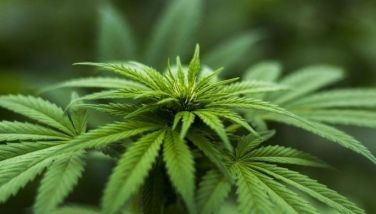UN-funded project aims to protect biodiversity of Samar Island
February 10, 2002 | 12:00am
The development of Samar Island as a major biodiversity area in the country has been gaining ground through the efforts of the Samar Island Biodiversity Project (SIBP) which is funded by the United Nations Development Programme-Global Environmental Facility and supported by local government units.
SIBP, the largest biodiversity project in the country, started in April last year. It scored a breakthrough when it discovered that vanilla naturally grows on Philippine soil, particularly in Samar. The discovery was made through the efforts of SIBP agronomist Dr. Rafael Creencia and some volunteers from the UN. The discovery has kindled hopes that vanilla production can be a lucrative means of livelihood for farmers in Samar.
SIBP spans the three provinces of Samar and cover 35 municipalities. It is being implemented in eight years, divided into two phases with phase one running from April 2001 to March 2005 while phase 2 covers the succeeding four years. The lead implementing agencies are the Protected Areas and Wildlife Bureau (PAWB), the DENR regional office in Tacloban City and with the cooperation of the non government organizations (NGOs), people‘s organizations (POs) and local communities in the areas and municipalities covered.
The project is deemed essential in the sustainable management and conservation of biodiversity-rich Samar Island. World Wildlife Fund lists Samar as a Global 200 Eco-Region. It is one of the 18 centers of plant diversity.
According to SIBP, the flora and fauna of the island consist of the following:
• 2,400 species of flowering plants including 406 endemic species, 40 species of which are found only in the island with 12 of them listed in the World List of Threatened Trees;
• 197 bird species including 50 Philippine endemics, thus making it an endemic bird area;
• 39 species of mammals or approximately 23 percent of total count of land mammals in the country, 18 species of which are endemic;
• 25 species of reptiles and 12 amphibians, including 15 endemics; and 360 hectares of unfragmented tracts of lowland tropical rainforest in the country. In 1996, then President Fidel Ramos issued Proclamation 744 declaring this forest as the Samar Island Forest Reserve.
Over the years, ecological degradation has been experienced by Samar. Encroachments, shifting cultivation, timber poaching, indiscriminate harvesting and non-timber forest products and mining related activities still pose grave threats to its environment. After completion of the project, SIBP envisions that indicators that the threats are diminished are clear.
SIBP, the largest biodiversity project in the country, started in April last year. It scored a breakthrough when it discovered that vanilla naturally grows on Philippine soil, particularly in Samar. The discovery was made through the efforts of SIBP agronomist Dr. Rafael Creencia and some volunteers from the UN. The discovery has kindled hopes that vanilla production can be a lucrative means of livelihood for farmers in Samar.
SIBP spans the three provinces of Samar and cover 35 municipalities. It is being implemented in eight years, divided into two phases with phase one running from April 2001 to March 2005 while phase 2 covers the succeeding four years. The lead implementing agencies are the Protected Areas and Wildlife Bureau (PAWB), the DENR regional office in Tacloban City and with the cooperation of the non government organizations (NGOs), people‘s organizations (POs) and local communities in the areas and municipalities covered.
The project is deemed essential in the sustainable management and conservation of biodiversity-rich Samar Island. World Wildlife Fund lists Samar as a Global 200 Eco-Region. It is one of the 18 centers of plant diversity.
According to SIBP, the flora and fauna of the island consist of the following:
• 2,400 species of flowering plants including 406 endemic species, 40 species of which are found only in the island with 12 of them listed in the World List of Threatened Trees;
• 197 bird species including 50 Philippine endemics, thus making it an endemic bird area;
• 39 species of mammals or approximately 23 percent of total count of land mammals in the country, 18 species of which are endemic;
• 25 species of reptiles and 12 amphibians, including 15 endemics; and 360 hectares of unfragmented tracts of lowland tropical rainforest in the country. In 1996, then President Fidel Ramos issued Proclamation 744 declaring this forest as the Samar Island Forest Reserve.
Over the years, ecological degradation has been experienced by Samar. Encroachments, shifting cultivation, timber poaching, indiscriminate harvesting and non-timber forest products and mining related activities still pose grave threats to its environment. After completion of the project, SIBP envisions that indicators that the threats are diminished are clear.
BrandSpace Articles
<
>
- Latest
Latest
Latest
April 10, 2024 - 5:12pm
By Ian Laqui | April 10, 2024 - 5:12pm
March 4, 2024 - 3:32pm
By Ian Laqui | March 4, 2024 - 3:32pm
March 4, 2024 - 2:12pm
By Kristine Daguno-Bersamina | March 4, 2024 - 2:12pm
February 17, 2024 - 2:31pm
February 17, 2024 - 2:31pm
February 13, 2024 - 7:24pm
By Gaea Katreena Cabico | February 13, 2024 - 7:24pm
Recommended




























